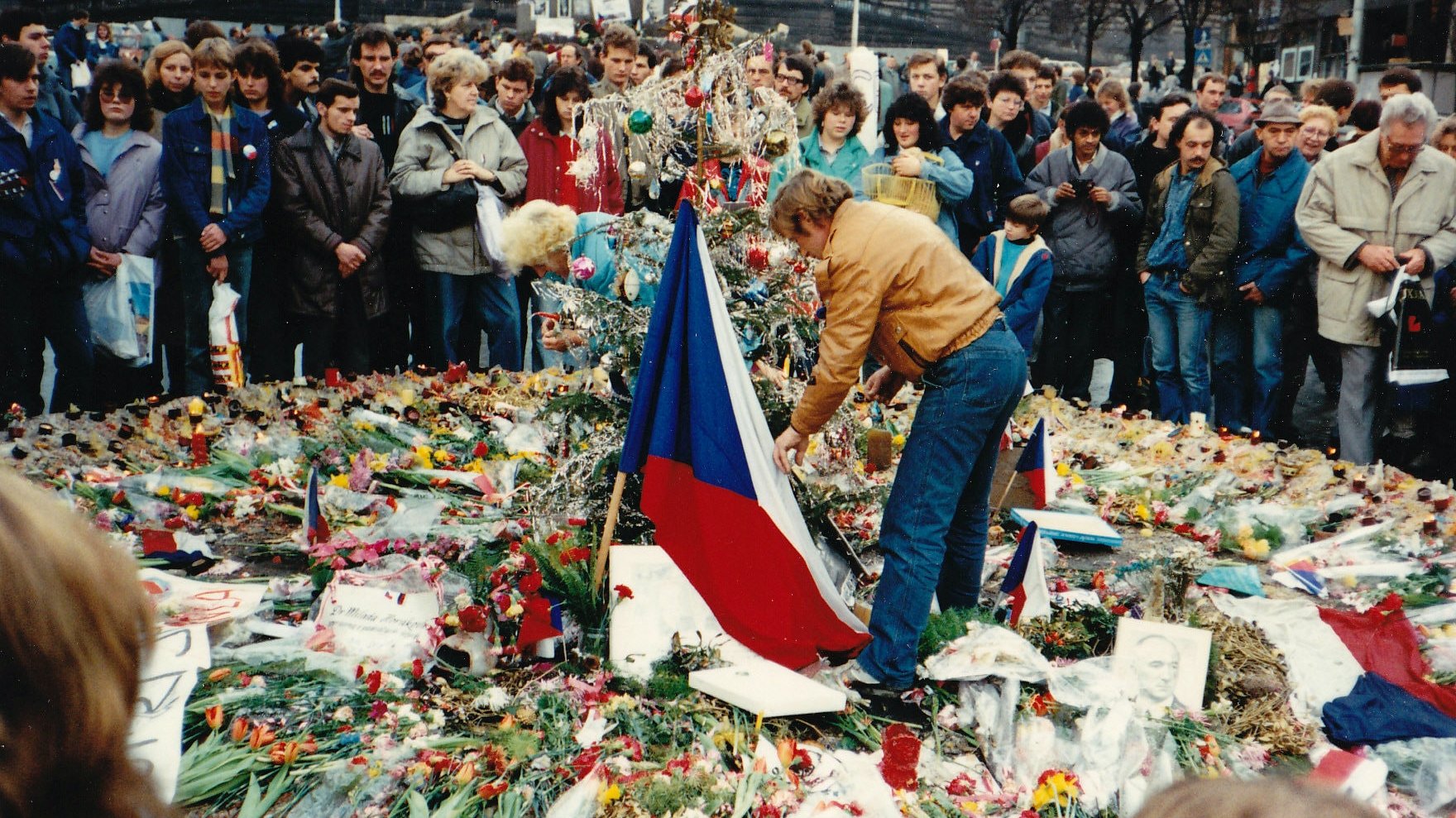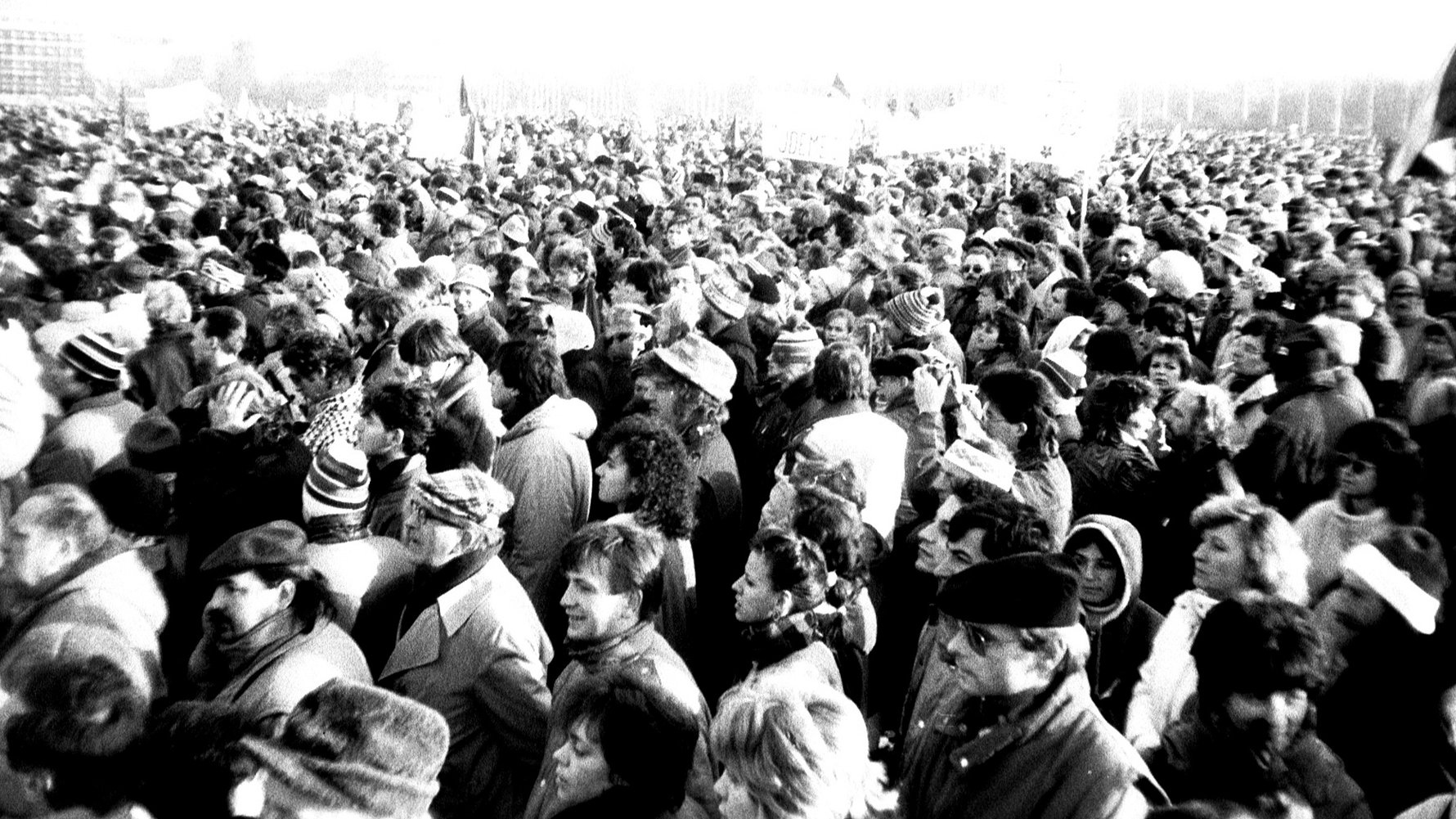Unfortunately for the Czechoslovakians, Gustav Husak, who came to power following the Prague Spring uprising in 1968, continued to push harsh Communist propaganda. By 1988, there were regular protests demanding change.
What’s come to be known as the Velvet Revolution occurred over a six week period from November 17 to December 29, 1989. November 17 was already an important date in Czechoslovak history. Fifty years ago, students held a demonstration protesting the Nazi regime. Students again took to the streets, this time in protest of a different oppressive government. The protest began as a legal rally, but soon turned into a demonstration demanding democratic reforms.

Mass demonstrations were held in Prague, Bratislava and others cities around the country from November 18 – 27, when a general strike was called. In theatres, instead of performances, people gathered for public discussions. It was one of these discussions on November 19, at Prague’s Činoherní Klub that the Civic Forum was founded. It was established as the “official spokesgroup for the segment of the Czechoslovak public which is ever more critical of the policy of the present Czechoslovak leadership.” The Civic Forum was led by Václav Havel, later to become the country’s first democratically elected president.
The group’s first demands were the resignation of the Communist government, release of prisoners of conscience and an investigation into the police action that had occurred on November 17. In the Slovak part of the country a similar action was taking place – the founding of the Public Against Violence group. Both groups immediately saw citizens joining en masse; and not just students. Factory workers, university staff and employees of a variety of other institutions were getting involved in the cause. It took about two weeks for the country’s media to begin broadcasting reports of what was really going on in Prague, but in the meantime, students began travelling to smaller cities and towns to rally support.

November 25 and 26 saw a massive demonstration of 750,000 people at Letna Park in Prague followed by the general strike on November 27. These two acts were devastating to the Communist regime. Prime Minister Ladislav Adamec held talks with Václav Havel who submitted a list of Civic Forum demands. At their second meeting, Adamec agreed to form a new coalition government. In addition the Constitution was to be amended through the deleting of three articles: guarantee of a leading role in political life for the Czechoslovak Communist Party and for the National Front, and the directive of a Marxist-Leninist education. These changes were unanimously approved by the Communist parliament on November 29.
These initial allowances led to an increase in demands by the people. A new government was formed by Marian Calfa which included only nine members of the Czechoslovak Communist Party, several of whom had cooperated with the Civic Forum. The rest of the government was made up of two members from the Czechoslovak Socialist Party; two from the Czechoslovak People’s Party and seven ministers with no previous party affiliation, all of whom were either members of the Civic Forum or Public Against Violence. President Husak named this new government on December 10 and later that day went on television to announce his resignation.
Political events moved swiftly; the parliament elected Václav Havel president on December 11 and he was elected by the people in July 1990.




Comments